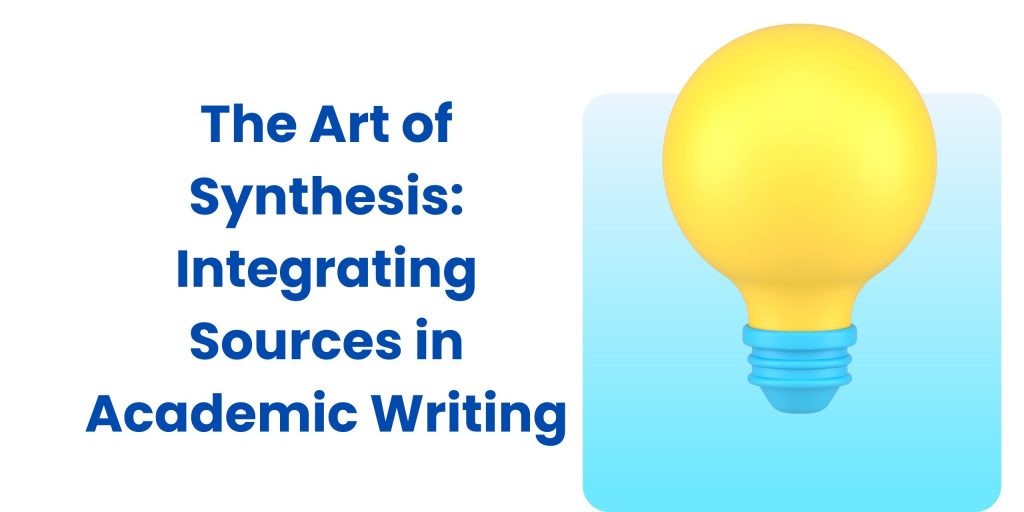Introduction:
In the realm of academic writing, the ability to integrate sources seamlessly is a skill that distinguishes exceptional papers from mediocre ones. Synthesis, the art of combining multiple sources to build and support your argument, is a fundamental aspect of scholarly discourse. In this comprehensive guide, we will explore the nuances of source integration, providing valuable insights and practical tips to enhance your academic writing prowess.
Understanding Synthesis:
Synthesis goes beyond mere summarization or paraphrasing of individual sources; it involves analyzing, evaluating, and synthesizing diverse perspectives to construct a cohesive argument. Rather than simply presenting a string of quotations, effective synthesis requires synthesizing information from various sources to create new insights and perspectives. This process fosters critical thinking and demonstrates your ability to engage with complex ideas in a meaningful way.
Identifying Key Themes and Arguments:
Before delving into synthesis, it’s essential to thoroughly understand the key themes and arguments of each source. Take the time to carefully read and analyze each text, identifying main ideas, supporting evidence, and authorial perspectives. Look for commonalities, contradictions, and gaps in the literature that can serve as focal points for synthesis.
Establishing Connections:
Once you’ve identified the key themes and arguments of your sources, begin to establish connections between them. Look for relationships, patterns, and overarching concepts that emerge across multiple texts. Consider how different authors approach the same topic and where their perspectives intersect or diverge. By drawing connections between sources, you can synthesize a more nuanced and comprehensive understanding of the subject matter.
Creating a Synthesis Matrix:
A synthesis matrix is a useful tool for organizing and synthesizing information from multiple sources. Create a table or spreadsheet where you can categorize sources based on key themes or arguments, and record relevant quotes, ideas, and evidence from each text. This visual aid allows you to compare and contrast different sources, identify patterns, and develop coherent arguments based on synthesized information.
Integrating Sources into Your Writing:
When integrating sources into your writing, aim for seamless integration that enhances the flow and coherence of your argument. Avoid simply dropping quotations into your text without context or analysis. Instead, introduce each source with a brief summary or context, followed by analysis and interpretation that relates the source to your argument. Use transitions and signposts to guide the reader through your synthesis, clearly indicating how each source contributes to your overall argument.
Maintaining Academic Integrity:
As you integrate sources into your writing, it’s crucial to maintain academic integrity by properly citing all borrowed ideas and information. Familiarize yourself with the citation style required by your discipline (e.g., APA, MLA, Chicago) and adhere to its guidelines consistently. Ensure that you accurately attribute ideas to their respective authors and provide page numbers or other locators for direct quotations. Plagiarism is a serious offense in academia, so always give credit where credit is due.
Refining Your Synthesis:
Synthesis is an iterative process that requires refinement and revision. As you develop your argument, continually reassess and revise your synthesis to ensure coherence, relevance, and depth. Seek feedback from peers, instructors, or writing tutors to gain fresh perspectives and identify areas for improvement. Be willing to revisit your sources, reconsider your analysis, and make adjustments as needed to strengthen your synthesis and argumentation.
Conclusion:
Mastering the art of synthesis is essential for academic success, enabling you to engage with complex ideas, construct compelling arguments, and contribute meaningfully to scholarly discourse. By understanding the principles of synthesis, identifying key themes and arguments, establishing connections between sources, and integrating them effectively into your writing, you can elevate the quality and impact of your academic work. Remember, synthesis is not merely a mechanical process of combining sources; it is a creative and analytical endeavor that requires critical thinking, reflection, and engagement with the scholarly community. With practice and dedication, you can become a proficient synthesizer capable of producing insightful and persuasive academic writing.
